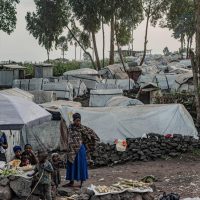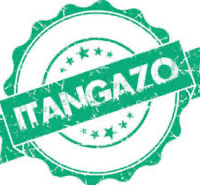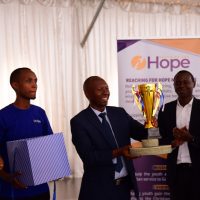Rwanda found its own unique path to reconciliation after the 1994 Genocide against the Tutsi. The east African country crafted its road to reconciliation despite all the challenges.
Rwanda has known unimaginable pain and suffering. For 100 days, in 1994, over one million lives were lost in the Genocide against the Tutsi. The scars of that dark period still linger, but three decades later, Rwanda has shown remarkable resilience in its efforts to heal and reconcile.
Rwandans are at the heart of this reconciliation journey.
During the 25th commemoration ceremony in Kigali, President Paul Kagame said: “Someone once asked me why we keep burdening survivors with the responsibility for our healing. It was a painful question, but I realized the answer was obvious. Survivors are the only ones with something left to give: Their forgiveness.”
“In the end, the only conclusion to draw from Rwanda’s story is profound hope for our world. No community is beyond repair, and the dignity of a people is never fully extinguished. Twenty-five years later, here we are. All of us. Wounded and heartbroken, yes. But unvanquished.”
Reconciliation after human rights violations, violent conflict and genocide is one of the most daunting tasks for a society, he said. It is ultimately a matter of finding a way forward and jointly transforming relationships, reconstituting the social fabric and strengthening the social cohesion.
In the last decades, it has become more and more evident for Rwandans, that there is no one-size-fits-all solution to reconciliation. Each context, with its specific history, dynamics, and conditions, needs to identify and design its own direction and strategy.
The path of reconciliation includes the process of acknowledging the atrocities, and suffering of the victims, preventing impunity, facilitating justice and supporting healing at all levels of society.
It was in July 1994, after stopping the genocide against the Tutsi that the RPF led the establishment of Government of National Unity in accordance with the Arusha Peace Agreement.
Since 1994, Rwanda has been working with partners and its citizens to reconcile and unite the people of Rwanda following decades of divisive politics and policies.
Rwanda’s progress is remarkable. It’s story should serve as an inspiration for other African countries grappling with how to shape the direction their countries take.
Through collective efforts, the country is creating a better future for the generations to come.
Reconciliation plays a big role in ensuring sustainable peace, stability, and development.
Genocide survivors have witnessed perpetrators admit that what they did was wrong, through restorative dialogues, and asking for forgiveness and working towards rebuilding relations.
There is power of restorative justice and reconciliation in promoting healing and forgiveness between survivors and perpetrators of the genocide. Despite the unimaginable pain and trauma, Rwandans found a way to unite and work towards a better future for themselves and their communities.
Through Ndi Umunyarwanda, Rwanda prioritized unity and reconciliation.
The scars of the genocide may never fully heal, but the country’s commitment to building a more inclusive and harmonious society is unwavering. Rwanda has shown the world that forgiveness, compassion, and unity, are possible, even in the face of unimaginable pain and trauma.
Initiatives aimed at promoting economic development and social inclusion have been essential for building a resilient society. Similar initiatives must be implemented in other parts of the world to promote lasting peace and stability.
Rwanda’s story reminds us that no matter how deep the wounds may be, healing and forgiveness are possible. Let us take inspiration from Rwanda’s journey and join hands to work towards a future where ethnic division, hatred, and prejudice have no place in our society as we renew our commitment to building a more inclusive and harmonious world for all.










